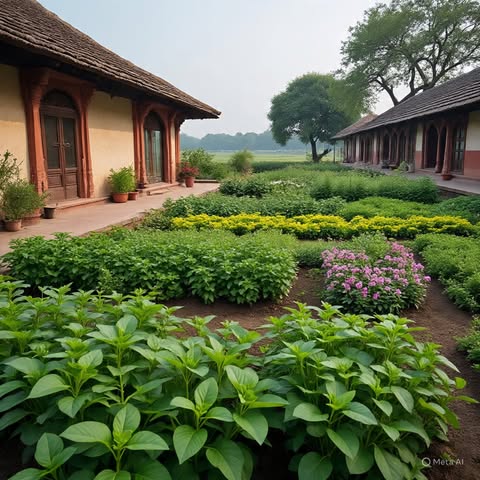Dinacharya — rhythm, not rules
Dinacharya literally means 'daily routine' in classical Ayurvedic texts. The point is not rigid ritual — it is the cultivation of regular rhythms that support digestion, sleep and attention. In urban life, time and space are limited, so we adapt: small, consistent practices can yield large benefits. This article outlines a practical urban-friendly dinacharya with safe, evidence-aware options and notes on when to seek medical advice.
Morning practices (15–30 minutes)
Start with hydration: a small glass of warm water on waking to support digestion. Then three to five minutes of breathwork or gentle movement — stretch the spine, move the joints, and bring circulation into the limbs. If you meditate, sit five minutes (longer if time allows) with a short mantra or breath-counting practice. Finish with a simple self-massage (abhyanga) if feasible — oiling the limbs briefly, focusing on the scalp, feet and joints; this can be 3–8 minutes and is deeply nourishing. For busy mornings, skip the oil but keep the breath and movement practice.
Midday: food & work rhythm
Make lunch the day's main meal when possible — digestion tends to be strongest earlier in the day. Choose warm, cooked meals that are easy to digest: grains, legumes prepared well, cooked vegetables and moderate proteins. Avoid heavy processed breakfasts when possible; a warm porridge or kichadi-style meal supports steady energy. Take short movement breaks every 60–90 minutes: even a two-minute walk and breath reset improves circulation and attention.
Evening and sleep hygiene
Wind-down routines matter more than exact bedtimes. An hour before sleep reduce screens and bright lights; prefer warm light and a short restorative practice (progressive relaxation or 10 minutes of calm breathing). Keep sleeping environment coolish, dark and quiet. If sleep is disturbed, review caffeine timing and daylight exposure; consider melatonin or medical support only after consulting a clinician if issues persist.
Food timing, dosha-aware choices and practical swaps
Urban diets tend to be heavy on fried convenience food. Make small swaps: include seasonal vegetables, reduce late-night eating, and prefer home-cooked grains and legumes. If you suspect a Pitta imbalance (irritability, acid reflux), cool foods and mindful portion control help. If Vata signs (anxiety, poor sleep) dominate, include oilier foods at night and steady routine. For persistent symptoms, a consultation with a qualified practitioner is essential — online symptom-checking is not a substitute for clinical assessment.
Evidence and safety
Regular movement, circadian-friendly timing and consistent meal schedules align with modern chronobiology research and show measurable benefits for metabolic health and mood regulation. See general public resources such as the World Health Organization for physical activity guidance and peer-reviewed chronobiology summaries for more scientific context.
References: World Health Organization — physical activity guidance; PubMed — chronobiology reviews.
Practical plan to start — 30 days
Week 1: Begin with morning hydration and two minutes of breath. Week 2: Add five minutes of movement mid-morning. Week 3: Improve lunch (warm, cooked) and add a 5-minute sleep-winddown. Week 4: Trial 3-minute abhyanga twice a week and keep a simple log: energy at noon, sleep quality at wake. Small, consistent steps beat erratic intensity.
— Written by Debesh Ranjan. For consultations and tailored dinacharya, visit Offerings.
This article — "Dinacharya for Urban Life: Practical Daily Routines" — is part of our ongoing effort at VividAshram to share practical, trustworthy guidance on holistic living. Our approach blends the classical teachings of Ayurveda, the practical discipline of yoga, and modern approaches to wellbeing so readers can apply these ideas safely at home.
Wherever relevant, we provide links to our services and resources: see our About page for background on the teachers, Ayurveda Shop for carefully prepared herbal formulations, and Offerings for retreats and in-person programs that reinforce practice.
Please treat the content here as educational and introductory. We avoid medical claims and urge anyone with health concerns to consult a qualified practitioner. For tailored guidance you can request a personalized consultation through our Contact page.
We aim for clarity and usability: each product or practice page includes ingredients, usage notes, and helpful cautions so you can make an informed choice. If you find this article useful, consider supporting our community through donations or join our upcoming retreats.






